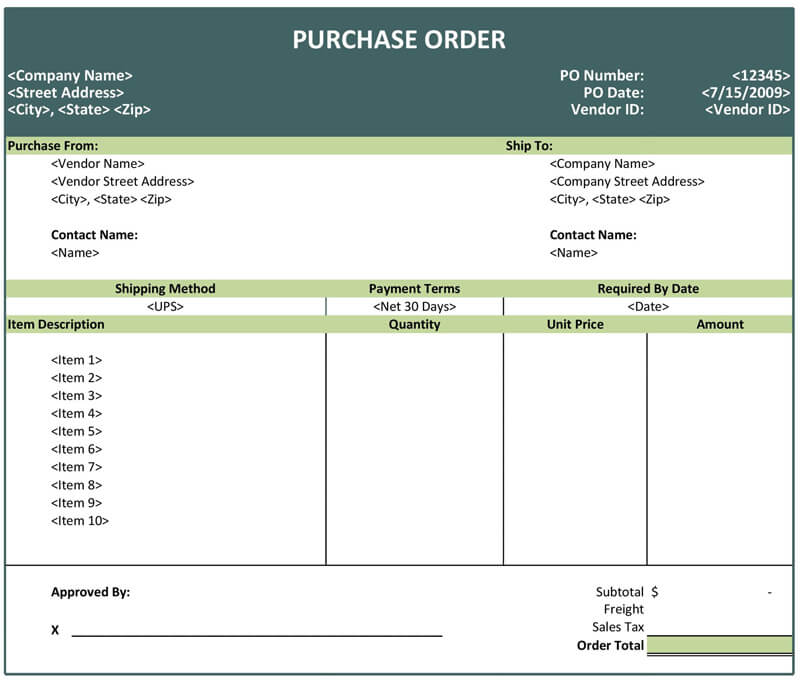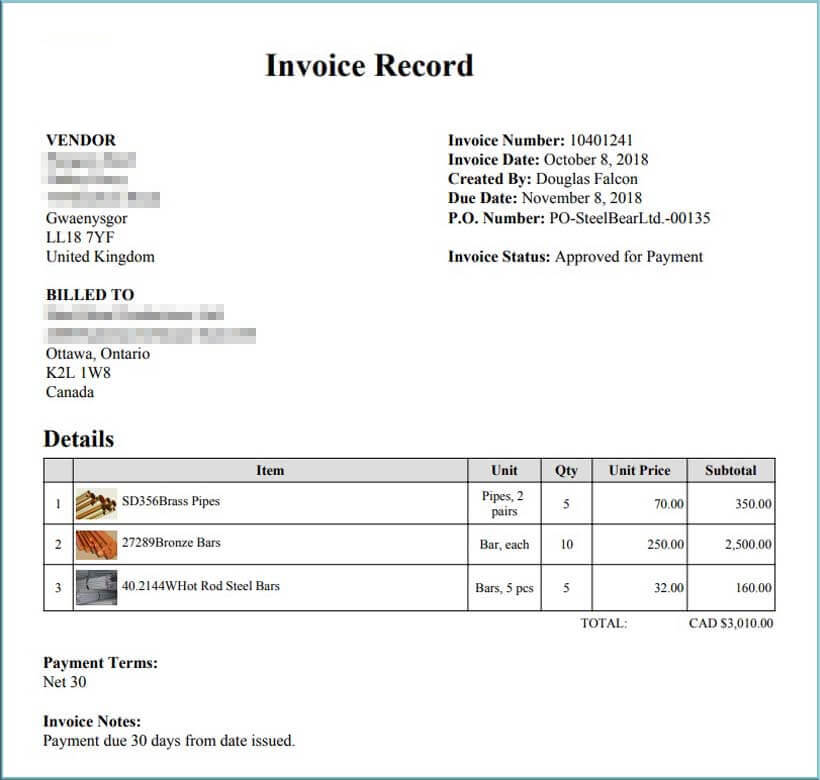Many people often confuse POs with invoices due to their numerous similarities. For example, they both contain identical information regarding the purchaser and the vendor, e.g., names or addresses, and both of them constitute a legally binding agreement. So someone may misuse these 2 documents and trigger a transaction dispute.
In this post, I’ll provide a comprehensive introduction to POs and invoices, helping you gain a better understanding of how to issue them accurately.
Explore the meaning of PO
PO stands for the purchase order. It is an official document issued by a buyer to confirm the placement of an order. It serves as a record of the buyer’s expectations regarding the desired products or services, including quantities and prices. The buyer sends the purchase order to the seller for approval, and once approved, it becomes a legally binding document.
There are 2 types of POs: standing purchase orders and blanket purchase orders. The former allows the buyer to place multiple orders for the same goods within a specific time period. It can use the same PO number. The latter refers to the buyer being able to receive multiple deliveries for a predetermined price over a fixed period. They may get discounts in this way.
What is the purchase order number?
A PO number is a unique number assigned to a purchase order. Buyers have the flexibility to assign a PO number according to their preferences, such as generating it based on the date, serial number, or other identifiers. This practice is suitable for small-scale business owners.
If the buyer operates on a larger scale, they can utilize a purchase management system to automatically generate and assign PO numbers. Alternatively, the supplier can also allocate and provide the PO number to the buyer.
PO numbers serve the purpose of tracking the order’s progress from its creation to delivery. This helps ensure that the seller ships the exact goods expected by the buyer and verifies that the amount for the goods matches the invoice.
Must-haves for a PO
There is no specific format for a PO, but the required details will all be covered. Here is a PO sample for your reference.
From the above, we can know that a good PO should include
- PO number
- Buyer and supplier’s details, including name, address, and contact information
- Order information, like product name, quantity, and price
- Tax Information
- Payment terms
- The delivery date and address
- Date of purchase
If you have any other special instructions, such as shipping instructions, you can also add them.
Discover invoices in business
An invoice, or a commercial invoice, is a financial document issued by a seller that requests payment for a purchase made through a purchase order. It serves as a formal record of the transaction and should match the details on the PO such as quantity and price.
There are three types of invoices: sales invoices, purchase invoices, and VAT invoices. Each type of invoice has specific functions and purposes. You can request the supplier to issue the invoice based on your needs. To streamline this process, many businesses now rely on expense management software to send the right type of invoice while ensuring compliance with accounting standards.
Key contents for an invoice
Invoices come in many different shapes and sizes, mainly depending on the suppliers. Here is an example to show you what an invoice looks like:
An invoice contains the same information as on POs and plus
- Invoice number
- Total amount due
- Payment schedule
- Discounts (if there are any)
Some buyers may require other detailed information, such as packaging methods and sizes. It could also be added in.
Unveil the Distinctions between PO and Invoices
Receivers
The first key difference between POs and invoices is receivers. A PO is sent to the seller while an invoice is for the buyer.
Please note that invoices require the seller’s signature or authorization, while POs do not enforce this requirement. In certain cases, especially within specific industries or as stipulated in contract terms, there may be a need for both parties to sign POs or invoices. This is done to emphasize the mutual agreement on transaction terms and conditions, as well as to confirm the responsibilities and rights of both parties.
Issuing time
In most cases, the PO comes first. It is generated at the beginning of the transaction to form a contract between sellers and buyers. And an invoice is created after the buyers pay the deposit or after the order is delivered.
Invoices can occasionally be generated and sent without a corresponding purchase order. This situation typically occurs when an order is made using a credit card via an e-Commerce platform. Such instances are more common for smaller purchases or when individual consumers make payments.
Purposes
The main purpose of a PO is to confirm the procurement and the agreed terms between the buyer and the seller. It ensures the fulfillment of the order but does not guarantee payment and taxes. It helps track and manage the procurement process, avoiding duplicate purchases or budget overruns.
An invoice, on the other hand, serves as a bill for the goods purchased by the buyer, enabling the seller to collect payment. Before making the payment, the buyer verifies if the invoice matches the purchase order, and if the amount is correct. Issuing an invoice serves as a legitimate transaction record, preventing future disputes over the amount and facilitating tax audits.
Purchase orders and invoices are vital in a retail business’s purchasing process. Understanding the differences between purchase orders and invoices will increase productivity for anyone purchasing goods.
As a leading sourcing company in China, Jingsourcing has helped 4000+ clients source and customize products from China. Our strong network comprises more than 200 trusted manufacturers, fostering mutually beneficial relationships. With swift precision, we diligently select suppliers based on your PO and deliver competitive pricing. Also, we can issue different types of invoices as required.
In addition, we provide a range of value-added services, including customized packaging, product inspection, and flexible shipping options, etc.



Leave A Comment